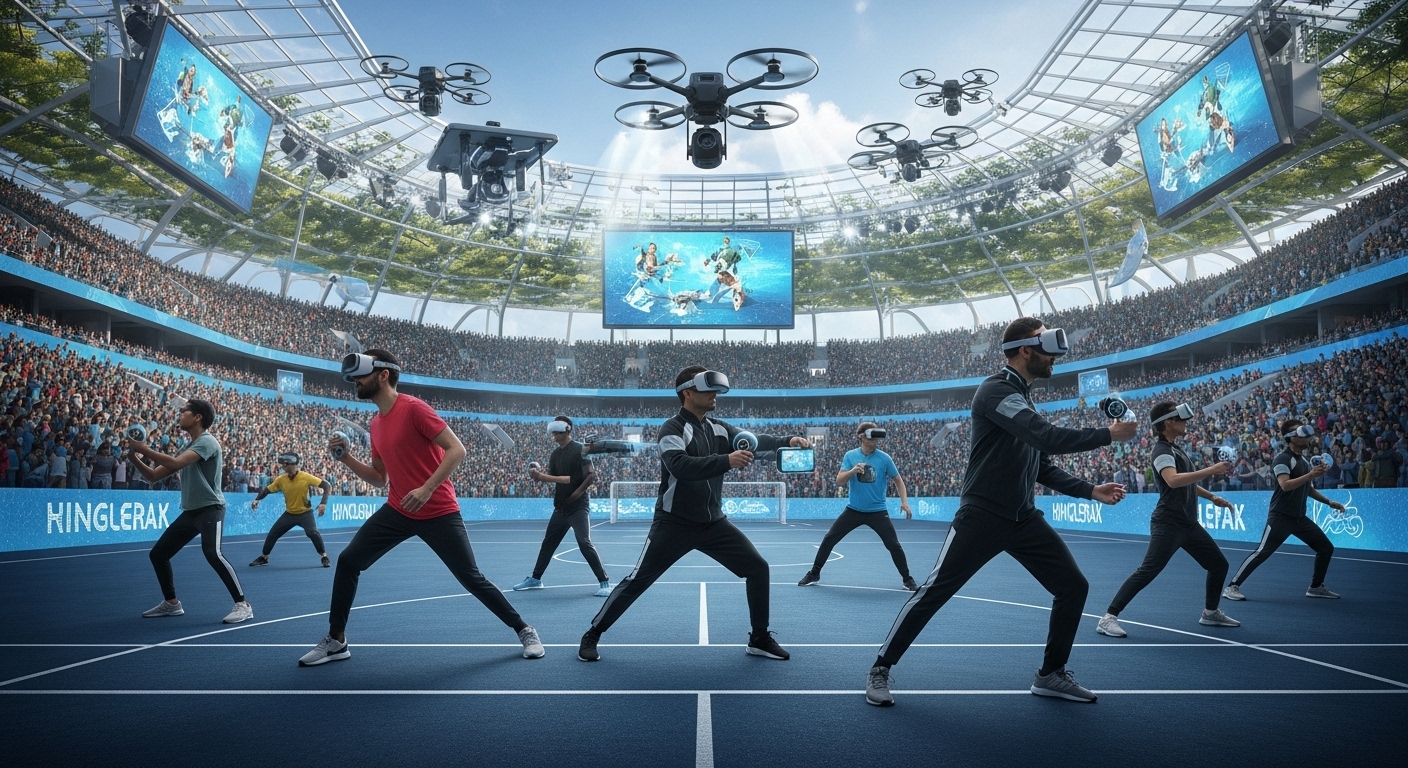The roar of the crowd, the perfectly executed play, the sheer joy of victory – “sports” are far more than just games. They are a fundamental part of human culture, embodying fierce competition, fostering vibrant communities, driving massive economic activity, and inspiring individuals across every demographic worldwide. As of mid-2025, the global sports landscape is more dynamic and technologically integrated than ever, continually reshaping how we play, watch, and connect.
The Multifaceted Nature of Sports
At its heart, sport involves physical exertion, skill, and competition, usually governed by a set of rules. However, its impact stretches far beyond the playing field:
- Physical Well-being: Sports are a cornerstone of health, promoting cardiovascular fitness, muscular strength and endurance, flexibility, and maintaining a healthy body weight. Regular participation is a powerful tool against chronic diseases and contributes to overall longevity. Studies in 2025 continue to highlight how physical activity, especially organized sports, significantly reduces the risk of mental health problems like depression and anxiety across age groups.
- Mental Fortitude: Beyond physical benefits, sports build mental resilience. They teach discipline, focus, strategic thinking, stress management, and the ability to perform under pressure. The joy of victory and the lessons learned from defeat are crucial for character development.
- Social Cohesion: Sports have an unparalleled ability to unite people. Whether as participants in a team, spectators cheering for a common cause, or communities celebrating national triumphs, sports break down barriers of age, gender, social status, and ethnicity. They foster a powerful sense of belonging and shared identity.
- Economic Engine: The global sports market is robust, projected to reach over $507 billion in 2025. The rapidly growing sports technology market alone is expected to be valued at $33.82 billion in 2025. This vast ecosystem encompasses professional leagues, broadcasting rights, merchandise, sponsorships, sports tourism, infrastructure development, and the manufacturing of sporting goods.
- Inspiration and Role Models: Athletes often become role models, inspiring millions with their dedication, perseverance, and achievements. Their stories of overcoming challenges motivate individuals to strive for excellence in their own lives.
Key Trends Shaping the Future of Sports in 2025
The world of sports is dynamic, constantly adapting to technological advancements and societal shifts:
- Technological Integration and Performance Optimization:
- AI Revolutionizes Performance: Artificial Intelligence is fundamentally transforming sports training and performance analysis. Wearable sensors and smart cameras meticulously track every nuance of an athlete’s movement, providing real-time data to AI algorithms. Coaches and trainers receive immediate feedback on form, stamina, and in-game decision-making, enabling precise adjustments. AI is also invaluable in injury prevention and recovery by analyzing movement patterns and workloads to pinpoint early warning signs, reducing injuries and extending careers.
- Advanced Analytics: AI-driven insights are transforming coaching strategies and talent identification, allowing teams to unearth hidden gems and make recruitment decisions based on comprehensive, objective analysis.
- Smart Stadiums: Expected to lead the sports technology market with a 41.2% share in 2025, smart stadiums integrate cutting-edge innovations to enhance fan engagement and operational management, including optimized lighting, climate control, and waste minimization.
- Wearable Technology: Beyond professional sports, fitness trackers and smart devices leverage AI to monitor heart rate, calorie expenditure, and workout intensity, offering tailored recommendations for overall wellness.
- Evolving Fan Engagement and Personalized Experiences:
- Immersive Viewing: Augmented Reality (AR) and Virtual Reality (VR) are significantly enhancing fan experiences. AR overlays provide real-time statistics and dynamic visuals, while VR offers virtual stadium tours and alternate broadcasts, allowing fans to watch matches from various angles.
- AI-Powered Personalization: AI is becoming a cornerstone of fan engagement strategies, enabling sports entities to deliver tailored experiences. This includes personalized highlight reels, real-time statistics, and predictive insights delivered directly to viewers’ devices. AI-driven chatbots interact with fans, answer queries, and recommend merchandise, creating seamless journeys.
- Direct-to-Fan Models: Teams and leagues are building multi-platform ecosystems, using messaging tools (WhatsApp, SMS, RCS) and team-specific apps to create two-way, real-time dialogues with fans. This fosters emotional loyalty, boosts revenue streams, and allows for 24/7 engagement through exclusive content, virtual events, and community activities. Fan ownership models, where supporters have a stake and voice in their favorite organizations, are also gaining traction.
- Growth of Women’s Sports: This is a major success story in 2025. The Women’s Sports Market is estimated to be growing at an 8.5% CAGR from 2025 to 2030, driven by heightened recognition, increased media exposure, and enhanced investments from sponsors. Major events like the 2025 Women’s Rugby World Cup are expected to break attendance records. The “Caitlin Clark Effect” in women’s basketball highlights how individual achievements are drawing unprecedented audiences and sponsorships, leading to increased revenue and the potential for new leagues and events.
- Sustainability as a Core Pillar: Sustainability in sports has transitioned from a niche concern to a central pillar of modern athletic culture. Sports venues are undergoing eco-conscious transformations, integrating renewable and recycled materials, and optimizing energy use with AI. Initiatives like the FIS Seminar 2025 focus on nature protection in sport, while the Green Sports Alliance continues to drive sustainable practices across professional and collegiate levels. This includes eco-friendly athletic wear, recycled rubber flooring, and tools like carbon footprint calculators for clubs and fans.
- Esports’ Continued Ascent: Competitive video gaming (Esports) continues its rapid growth, expected to reach a global audience of over 640 million in 2025, with Asia-Pacific accounting for over 57% of viewers. Leagues like League of Legends, Valorant, and Counter-Strike remain dominant, drawing millions of dedicated fans. Esports marketing is set to pass $1 billion in revenue, with major brands, including those in health and wellness, tech, and even traditional sports bodies, increasing their sponsorships. The inclusion of chess in the Esports World Cup highlights its expanding reach.
The Unifying Power
Sports, in all their forms, are a powerful force for good. They teach invaluable life lessons, promote healthy living, provide escape and entertainment, and most profoundly, they connect us. Whether it’s the shared anticipation before a major championship, the collective cheer of a victory, or the communal commiseration in defeat, sports foster a unique sense of belonging. The love for sports remains a vibrant testament to humanity’s competitive spirit and its profound need for connection and shared experience.

